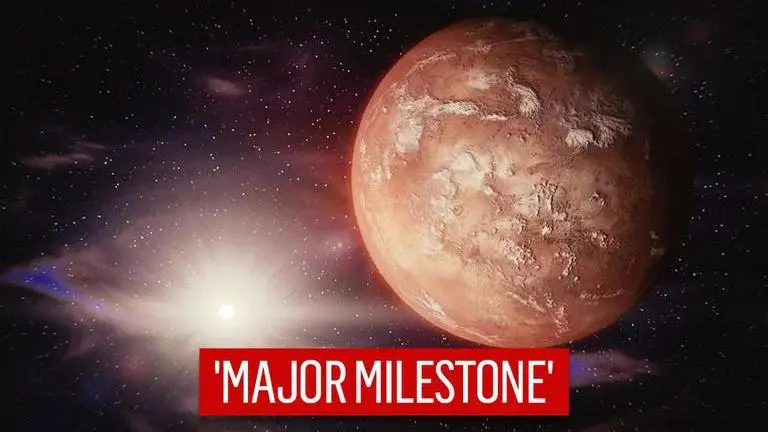Updated 11 February 2021 at 19:09 IST
Halogen gas discovered in atmosphere of Mars, scientists call it a 'major milestone'
ESA-Roscosmos ExoMars Trace Gas Orbiter spacecraft detected the first halogen gas on Mars, shedding new light on the history of the Red Planet.
- Science News
- 3 min read

ESA-Roscosmos ExoMars Trace Gas Orbiter spacecraft detected the first halogen gas on Mars, shedding new light on the history of the Red Planet. According to a study published in Science Advances, scientists detected hydrogen chloride, which is comprised of one hydrogen atom and one chlorine atom. The researchers said that gases based on chlorine or sulphur are possible indicators of volcanic activity, which Mars scientists were already looking to discover, but the new find has some strange qualities.
‘First new trace gas in Mars’ atmosphere’
According to study, the fact that this particular discovery was made in distant locations at the same time, without any other gases that would be expected from martian volcanos, means that an unknown process between the surface of the planet and its atmosphere is taking place. The scientists said that salt is lifted into the atmosphere by winds. Sunlight, on the other hand, warms the atmosphere causing dust and water vapour to rise. These two components reach with each other in a bid to release chlorine eventually producing hydrogen chlorine.
In a statement, Håkan Svedhem, ESA’s ExoMars Trace Gas Orbiter project scientist said, “The discovery of the first new trace gas in the atmosphere of Mars is a major milestone for the Trace Gas Orbiter mission”.
Svedhem added, "This is the first new class of gas discovered since the claimed observation of methane by ESA’s Mars Express in 2004, which motivated the search for other organic molecules and ultimately culminated in the development of the Trace Gas Orbiter mission, for which detecting new gases is a primary goal”.
Advertisement
Scientists said that understanding the process in more detail is vital to understanding how the Martian climate evolved, especially as the cycle is so similar to that on Earth. Svedhem said that the changing seasons on Mars and particular the relatively hot summer in the southern hemisphere seem to be the driving force behind the new observations such as the enhanced atmospheric water loss and the dust activity linked to the detection of hydrogen chloride, that was seen in the two latest studies. He added that Trace Gas Orbiter observations are enabling the researchers to explore the Martian atmosphere like never before.
Scientists can also measure water vapour and ‘semi-heavy’ water, which is when a hydrogen atom in the compound is replaced by a deuterium atom. These developments can be measured in more detail than has ever been done before. Principal investigator of the Nadir and Occultation for MArs Discovery (NOMAD), said that it is like the scientists had 2D view before, but now they can explore the atmosphere in 3D.
Advertisement
Published By : Bhavya Sukheja
Published On: 11 February 2021 at 19:12 IST
